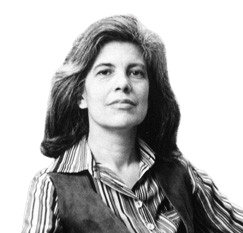Life and achievements
Early life
Susan Sontag was born in New York City in a Jewish family of Lithuanian and Polish origin. Her father passed on when she was five years old, and this made her mother bring up Susan and her sister. The family was constantly relocating, living in Arizona and California for some time. Sontag said that she felt mentally isolated in childhood; her mother was emotionally detached and uncommunicative.
Reading became her solace, and by 15, she was in high school, attending North Hollywood High School. Sontag also went to the University of California Berkeley for her higher studies and then shifted to the University of Chicago, where she majored in philosophy, literature, and history.
At 17, she married sociologist Philip Rieff, a marriage that lasted until 1959, and she produced her son, David. Sontag's social network enlarged during this period, and European writers and philosophers had a tremendous impact on forming her critical view. The time she spent at the University of Paris, she strengthened her ties with European intellectualism, which was the basis for her subsequent works.
Legacy
The critical spirit and the integration of reason with culture are the two features that characterized Susan Sontag's career. Her essays have remained some of the most essential texts in cultural studies that have shaped future generations of critics, writers, and artists. Photography changed the scholarship and public perceptions of photography and visual culture, and Illness as a Metaphor is still a reference in medical humanities. Her work on how the disease is employed as a metaphor to marginalize people is still pertinent, especially in the current world crisis.
Apart from her writing, Sontag's political activism placed her at the center of intellectual politics. Her stand against the Vietnam War, for human rights, and for Sarajevo during the Bosnian War showed that she was ready to fight for a cause in the public limelight. Her statements regarding communism and fascism, as well as her criticism of imperialism, demonstrated her willingness to face the difficult reality.
Sontag's work impacted academic circles, popular culture, politics, and media. Her work on camp aesthetics, especially in her essay Notes on 'Camp', has remained an essential source of reference in queer theory and cultural studies. While her private life, especially her relationship with Annie Leibovitz, has attracted interest after her death, her writings are her most significant contribution.
Milestone moments
Jan 25, 1966
Susan Sontag published her essay collection Against Interpretation in January 1966. This work arguably cemented Sontag's status as a cultural critic and intellectual.
The essays questioned the postmodern methodologies of art criticism, stating that interpretation diminishes art to something to be thought about.
Sontag pleaded for an "erotics of art," that is, audiences should be able to respond to works of art sexually.
Against Interpretation was to become the manifesto for this new kind of criticism, which combined philosophy and culture.
It is still considered a classic work in today's literature and cultural criticism.
In this work, Sontag emerged as a provocative intellectual who challenged society to embrace a new way of interacting with art and culture.
Mar 25, 1977
On Photography Released
On Photography by Susan Sontag, published in March 1977, remained one of the most influential books by the author.
In this collection of essays, Sontag critically analyzed how photography impacts public perception and changes the reality experience.
In this work, Sontag pointed out that photographs interfere with the perception of reality by packaging the moments, thus converting the experiences into commodities.
She also focused on the ethical side of watching suffering through a camera lens, questioning the possibility of making people indifferent to it.
On Photography received the National Book Critics Circle Award and was adopted as a media and cultural analysis textbook.
It profoundly impacted discourses on the role of images in contemporary society.
Sontag's critique of photography still applies to today's culture, where digital technology has further exacerbated all her highlighted concerns.
Apr 25, 1978
Illness as Metaphor Published
In April 1978, Susan Sontag published Illness as Metaphor, which discusses how disease-related metaphors harm patients.
This book was based on her experience with cancer, though she did not use the word 'I' when describing her experience.
Sontag claimed that people employ illness as a metaphor to convey covert concerns and cultural phobias and stigmatize the sick.
Her critique was directed towards the social construction of illness as a moral or psychological issue.
It also left a lasting legacy in medical humanities by providing a different way of thinking about how disease is talked about.
It resulted in a related work, AIDS and Its Metaphors (1988), which developed these ideas during the AIDS epidemic.
Sontag's analysis of illness has remained relevant and topical, especially in public health, because it challenges the cultural connotations associated with a diagnosis.
May 25, 1992
The Volcano Lover Published
Sontag's first historical novel, The Volcano Lover, was published in May 1992, and this is when she became a novelist in the broader public eye.
The novel is based on actual events and real characters and takes place in 18th-century Naples: the main characters are the British ambassador Sir William Hamilton and his wife Emma, who was the lover of Admiral Lord Nelson.
In this regard, Sontag analyzed art, love, and political authority.
The Volcano Lover turned into a hit and proved that Sontag could write a historical novel with elements of high philosophy.
The book's success gave her the recognition that placed her not only as a critic but also as a novelist.
It gave Sontag a polyphonic voice and freed her to do more narrative complexity, a feature evident in her subsequent fiction.
